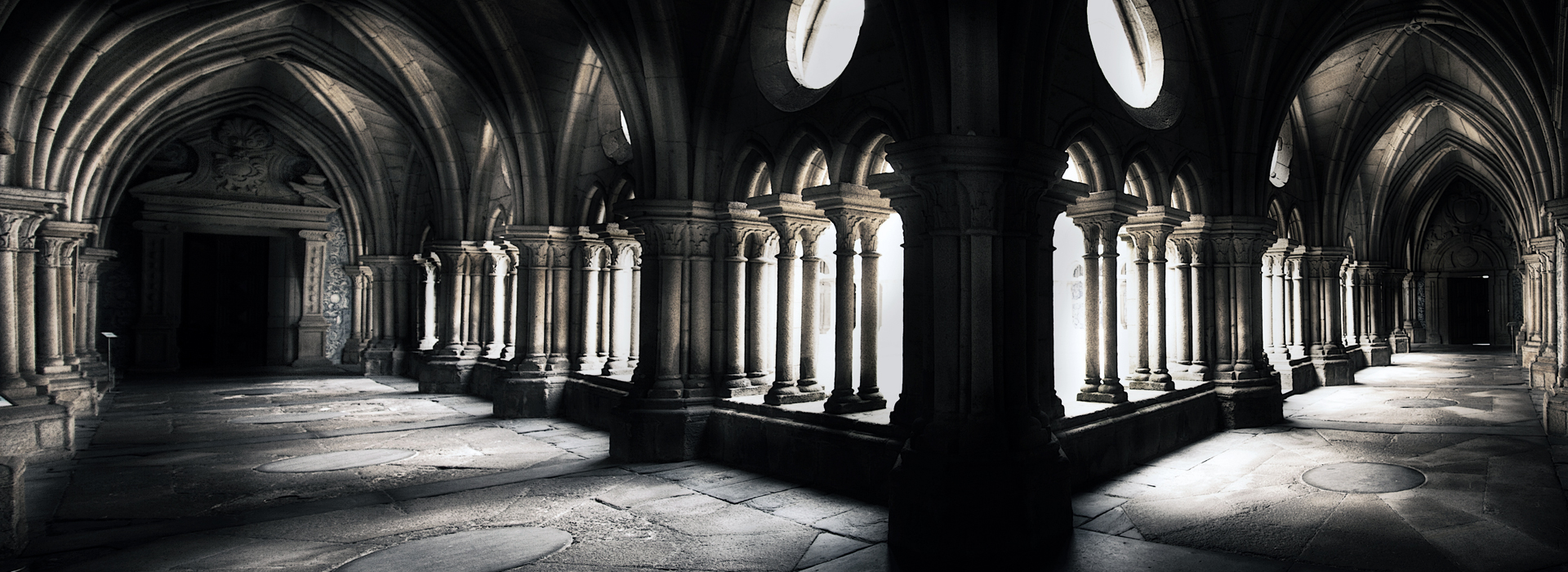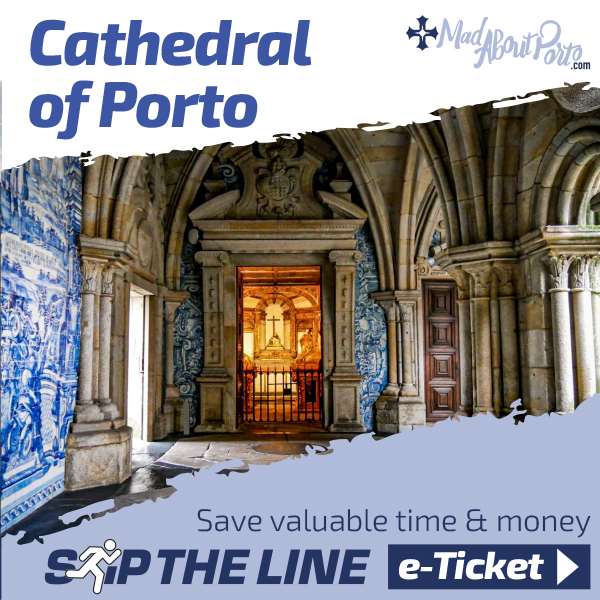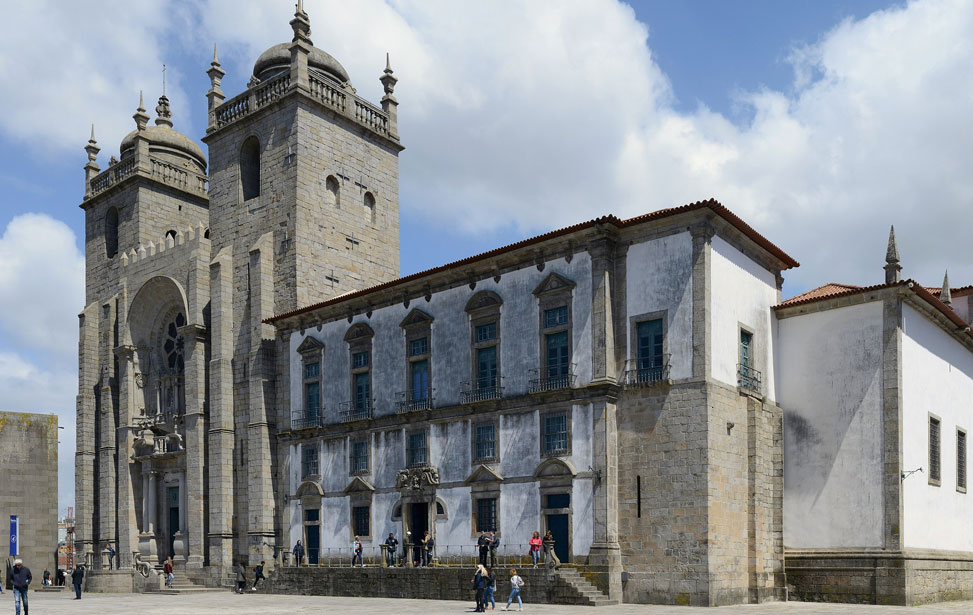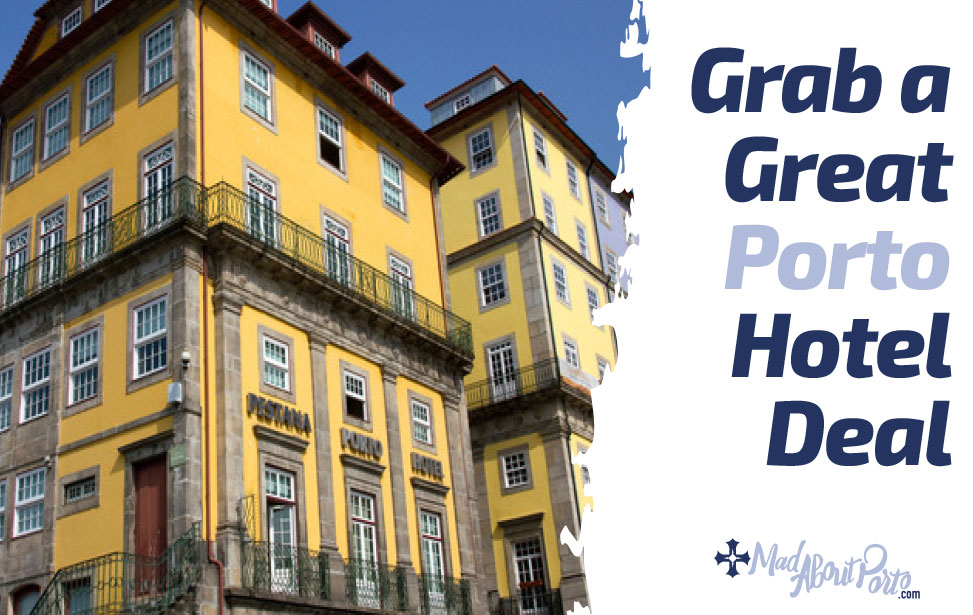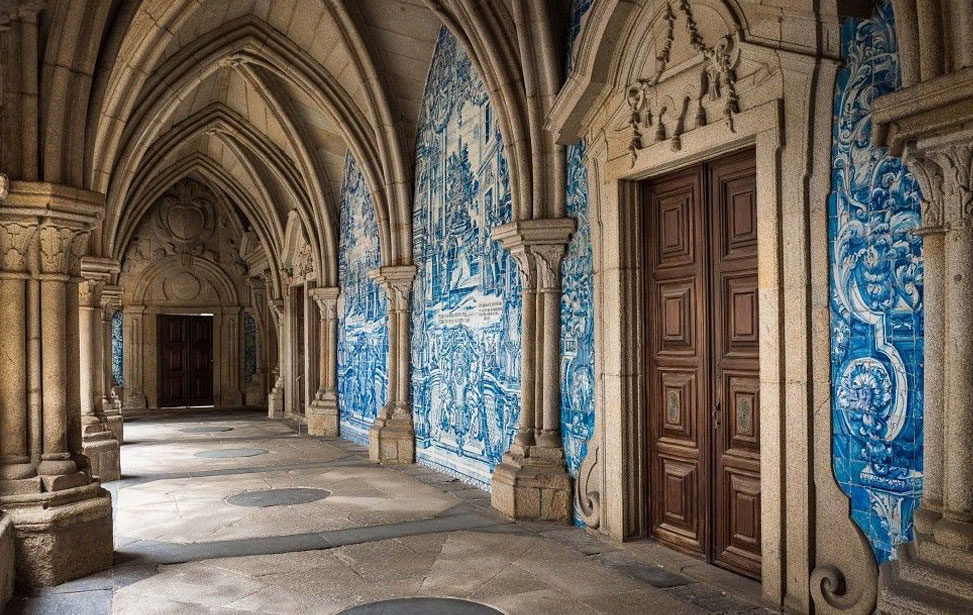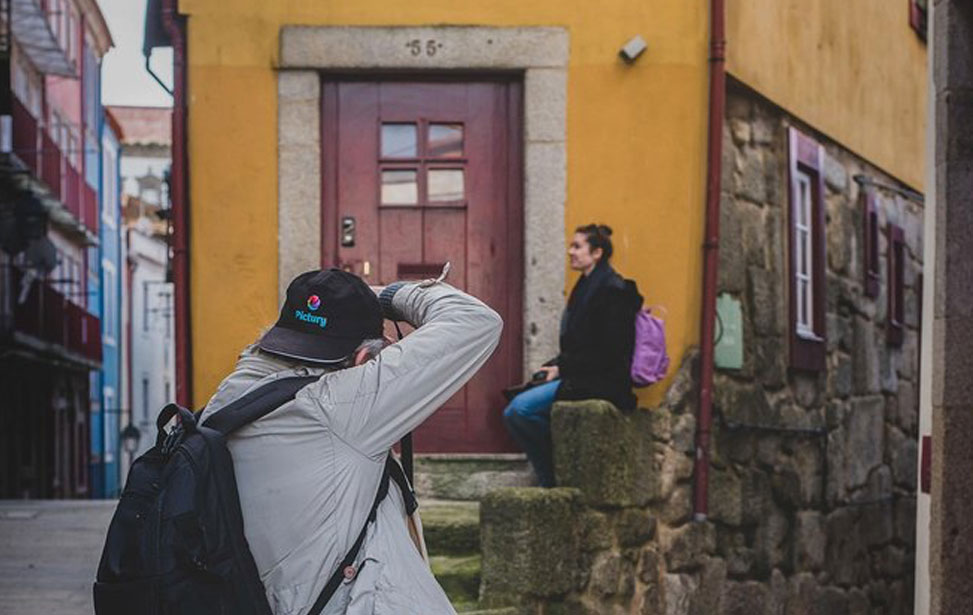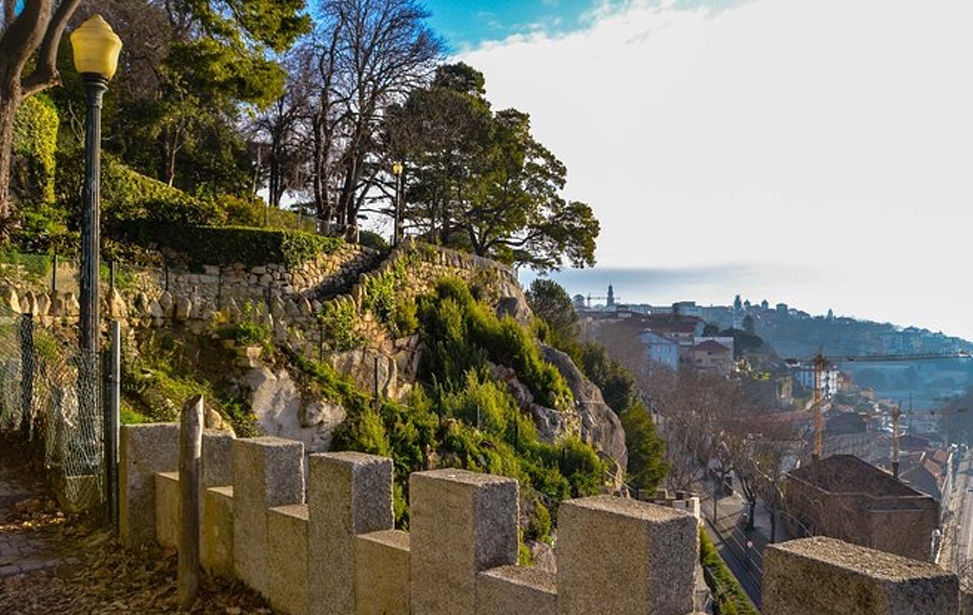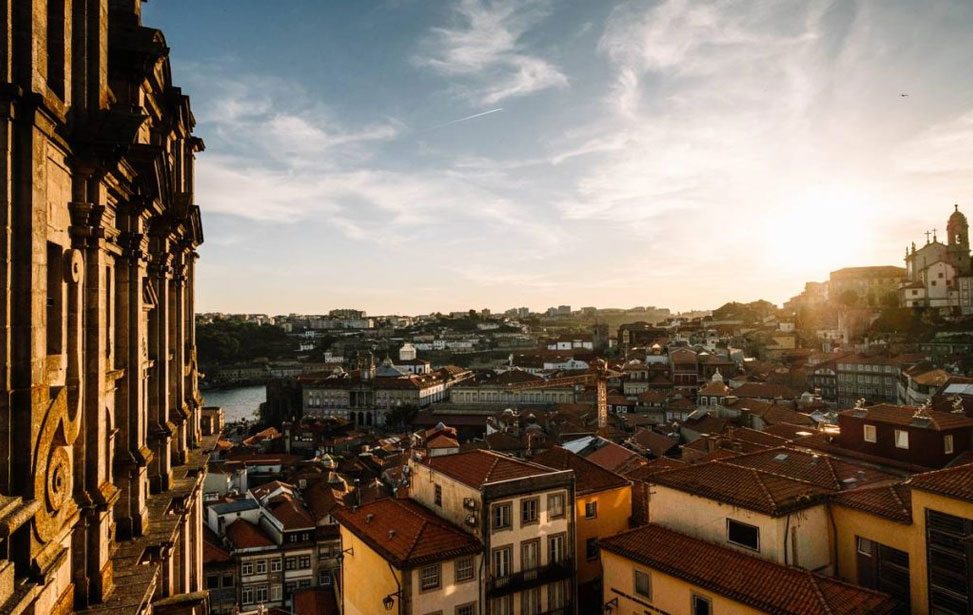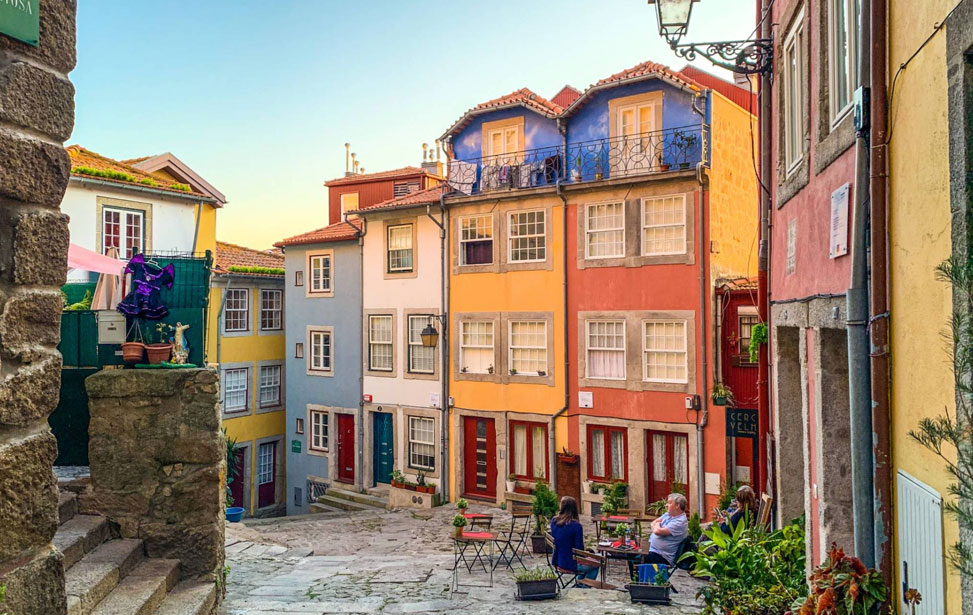PORTO CATHEDRAL (SÉ)
The Cathedral's elevated location on Rua de São João overlooks Porto's famous rooftops and is an intrinsical part of the skyline for miles. The Cathedral is one of Porto's most popular attractions, and rightfully so. Let MADABOUTPORTO.com be your guide to how to get there, what to see and unravel the hidden streets in the surrounding area. Learn the best places to eat and sleep nearby. You can also browse various tour packages for a more in-depth and informative experience.
INTRODUCTION TO THE CATHEDRAL
The Batalha district, where the Cathedral is, was once inside Porto's medieval city walls. It was founded by Dona Teresa, the mother of Afonso Henriques, in the early 12th century. It has a long history of restorations and alterations, resulting in mixed architectural styles. Dom João I married Phillipa of Lancaster here in 1387, but they would have problems recognising the present construction. The only remaining original feature of the main façade is the Romanesque rose window set within a crenellated arch. The crenellations on the Cathedral bears testament to Portugal's turbulent history. The façade is flanked by two square bell towers, each supported with two buttresses and crowned with cupolas. The loggia on the North face is accredited to the Italian architect Nicolau Nasoni and dates from around 1736.


 MAD ABOUT LISBON
MAD ABOUT LISBON MAD ABOUT SINTRA
MAD ABOUT SINTRA MAD ABOUT PORTUGAL
MAD ABOUT PORTUGAL